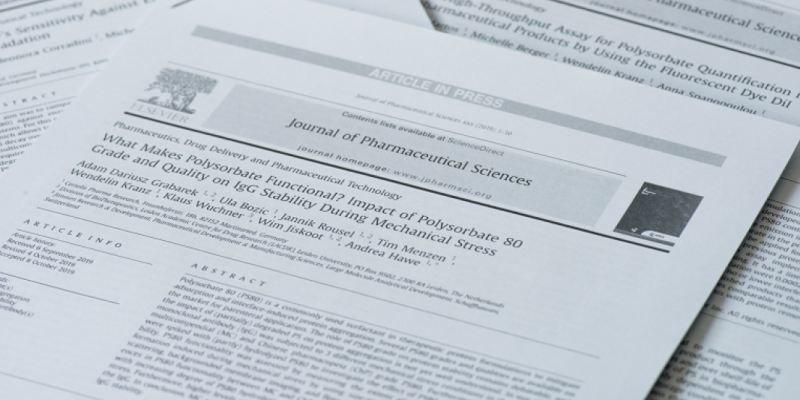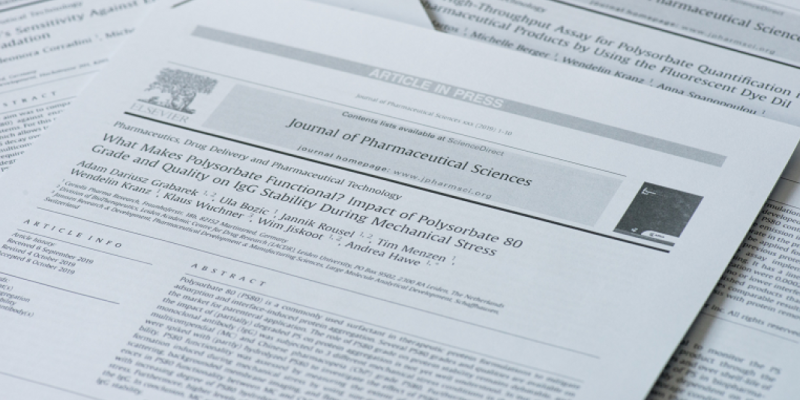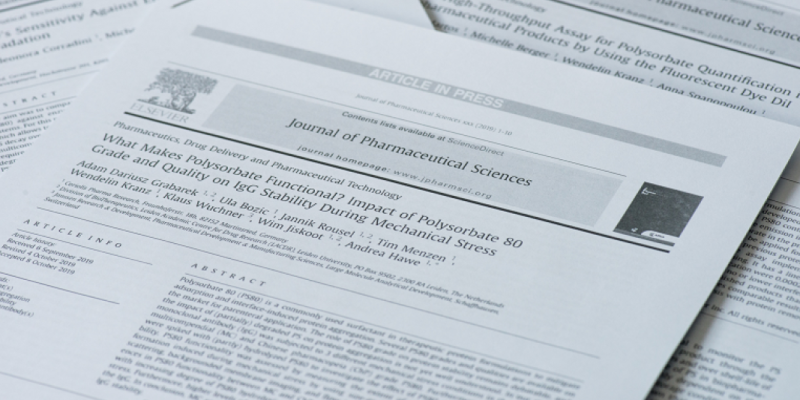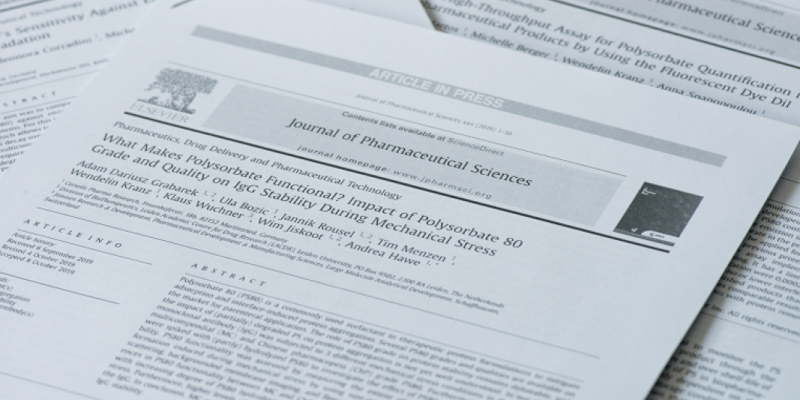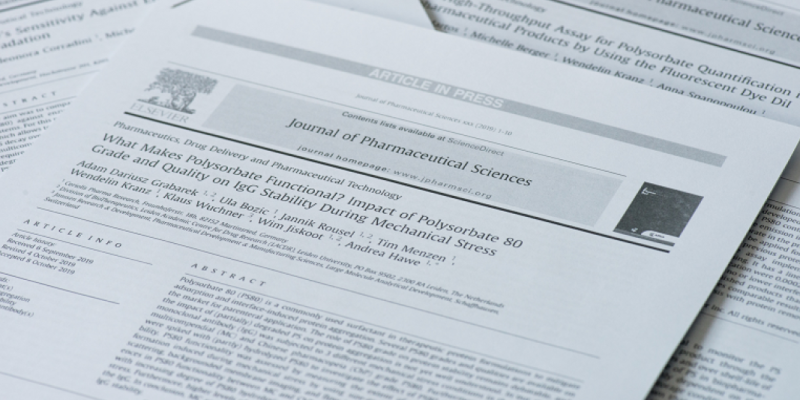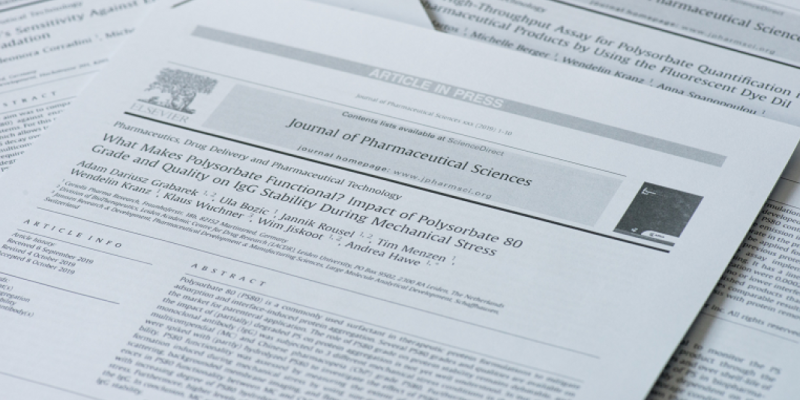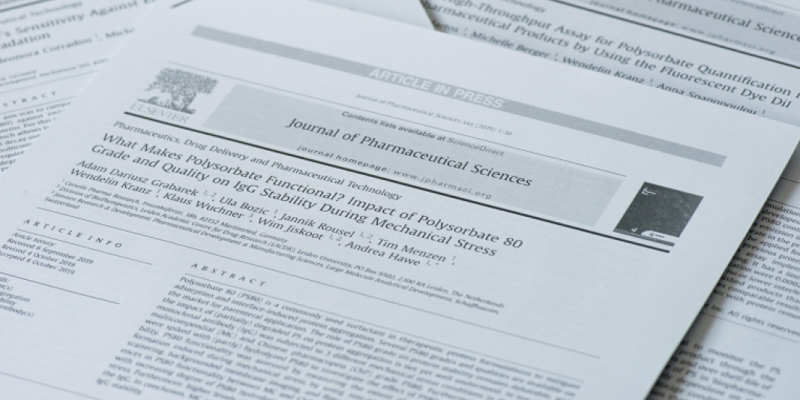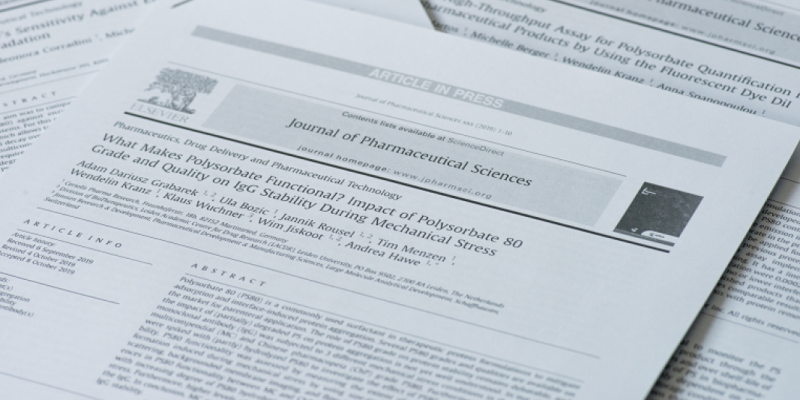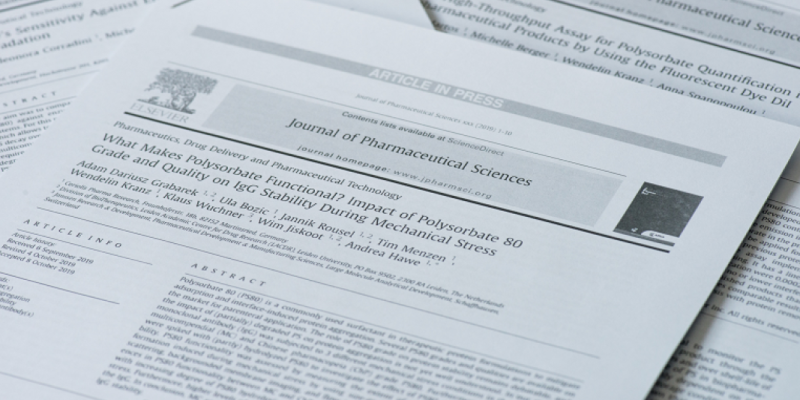Characterization of Virus Particles and Submicron-Sized Particulate Impurities in Recombinant Adeno-Associated Virus Drug Product
Journal of Pharmaceutical Sciences
Characterization of Virus Particles and Submicron-Sized Particulate Impurities in Recombinant Adeno-Associated Virus Drug Product
Characterization of particulate impurities such as aggregates is necessary to develop safe and efficacious adeno-associated virus (AAV) drug products. Although aggregation of AAVs can reduce the bioavailability of the virus, only a limited number of studies focus on the analysis of aggregates. We explored three technologies for their capability to characterize AAV monomers and aggregates in the submicron (<1 µm) size range: (i) mass photometry (MP), (ii) asymmetric flow field flow fractionation coupled to a UV-detector (AF4-UV/Vis) and (iii) microfluidic resistive pulse sensing (MRPS). Although low counts for aggregates impeded a quantitative analysis, MP was affirmed as an accurate and rapid method for quantifying the genome content of empty/filled/double-filled capsids, consistent with sedimentation velocity analytical ultracentrifugation results. MRPS and AF4-UV/Vis enabled the detection and quantification of aggregate content. The developed AF4-UV/Vis method separated AAV monomers from smaller aggregates, thereby enabling a quantification of aggregates <200 nm. MRPS was experienced as a straightforward method to determine the particle concentration and size distribution between 250-2000 nm, provided that the samples do not block the microfluidic cartridge. Overall, within this study we explored the benefits and limitations of the complementary technologies for assessing aggregate content in AAV samples.
Journal of Pharmaceutical Sciences


